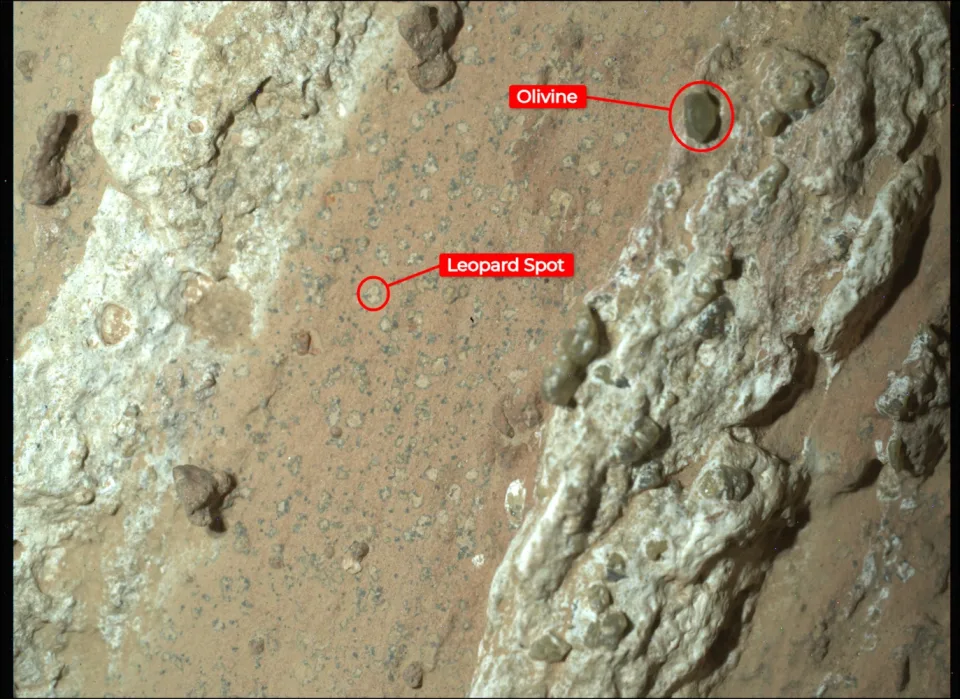On the other hand, the rock must still be brought back to Earth for a comprehensive examination.
Despite the fact that the Perseverance rover from NASA has been gathering samples from Mars since 2021, one of the rocks that it has obtained most recently has the potential to assist it in accomplishing its objective of discovering evidence of ancient life on the planet. The sample, which measures 3.2 feet by 2 feet and is referred to as Cheyava Falls after the Grand Canyon’s greatest waterfall, is said to have “chemical signatures and structures” that could have been generated by ancient microbial life that existed billions of years ago.
The rock was recovered by Perseverance on July 21 from a region that had been a river valley on Mars, which had been formed by flowing water a very long time ago. Large white calcium sulfate veins can be seen running along the length of the sample, which can be seen in close-up below and from a closer vantage point at the center of the image above. Their presence is evidence that water did, at one point in time, flow through the rock.
More importantly, it has marks that are millimeters in size and appear to be “leopard spots” all over the reddish band that run through the middle of it. Those spots could emerge on sedimentary terrestrial rocks on our planet when there are chemical reactions that transform hematite, one of the minerals responsible for Mars’ reddish tint, to white. Hematite is one of the minerals that gives Mars its peculiar appearance. The processes in question have the potential to liberate iron and phosphate, both of which may have been utilized by bacteria as a source of energy.
The Planetary Instrument for X-ray Lithochemistry (PIXL) instrument on the rover has previously established that the black rings that surround the spots are composed of iron and phosphate. Having said that, this does not necessarily imply that the rock did, in fact, act as a host for ancient bacteria.

There is a possibility that the spots were produced by mechanisms that are not related to biology; this is something that the scientists will need to investigate. Katie Stack Morgan, who is the deputy project scientist, stated that it is not possible for us to confidently declare that we have found life on Mars at this time. “But what we are saying is that we have a potential biosignature, which is a set of features that could have a biological origin but do need further study and more data.”
The samples that the Perseverance had collected, including those from Cheyava Falls, have not yet been returned to our planet by scientists from NASA. According to The New York Times, the Mars Sample Return mission is several years behind schedule. Additionally, it is anticipated that the project will not be able to retrieve rocks from the red planet until the year 2040, as opposed to the early 2030s as was initially envisioned. The National Aeronautics and Space Administration (NASA) has lately requested alternate options from aerospace businesses regarding how to bring the samples to Earth much more quickly. The agency will also provide funding for the investigations that are scheduled to be completed later this year. Before scientists can declare that the leopard spots are, in fact, proof of ancient life on Mars, they will first need to do thorough testing to eliminate the possibility of contamination and processes that are not biological, as well as other potential explanations for how the leopard markings came to be.

